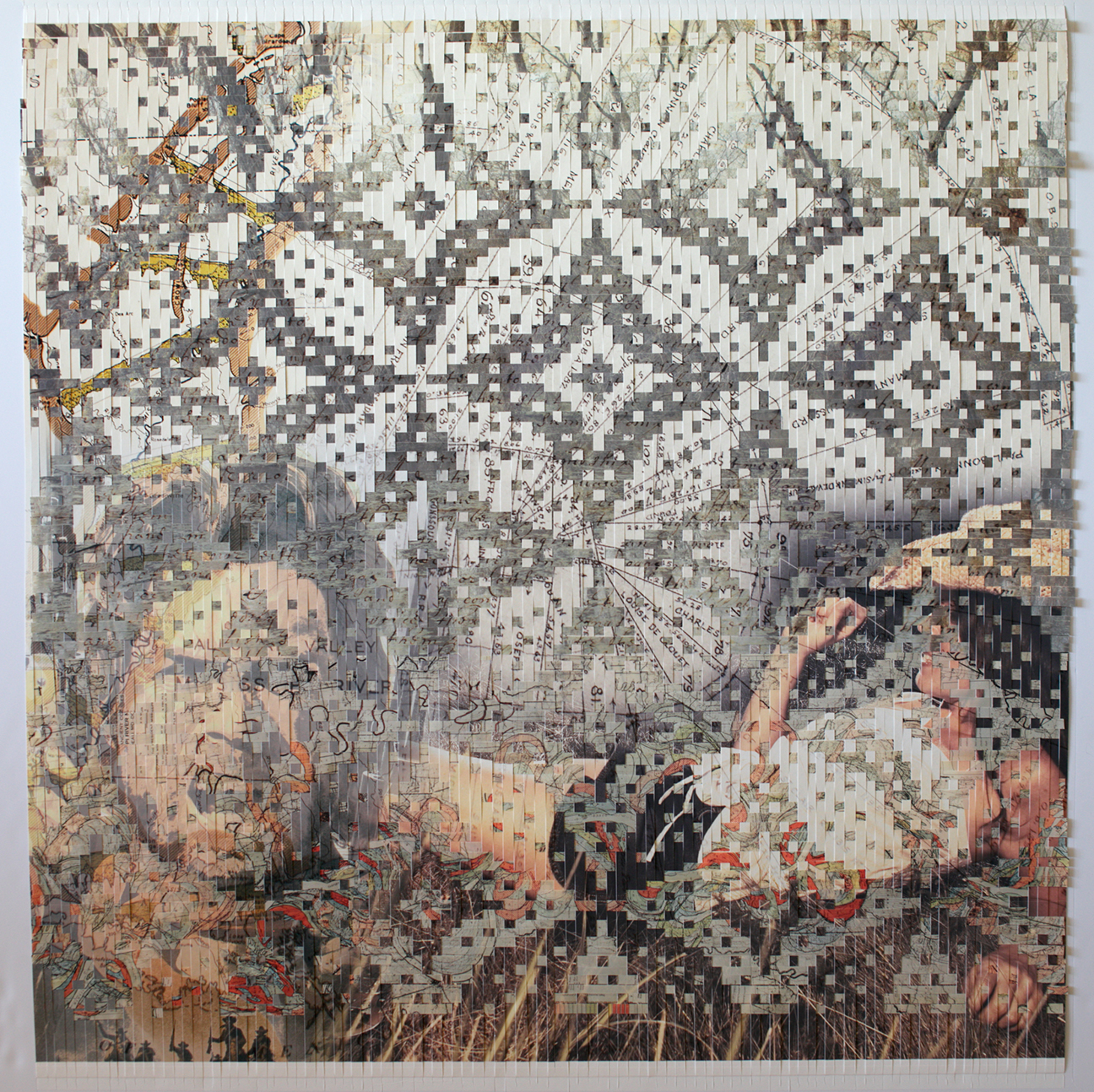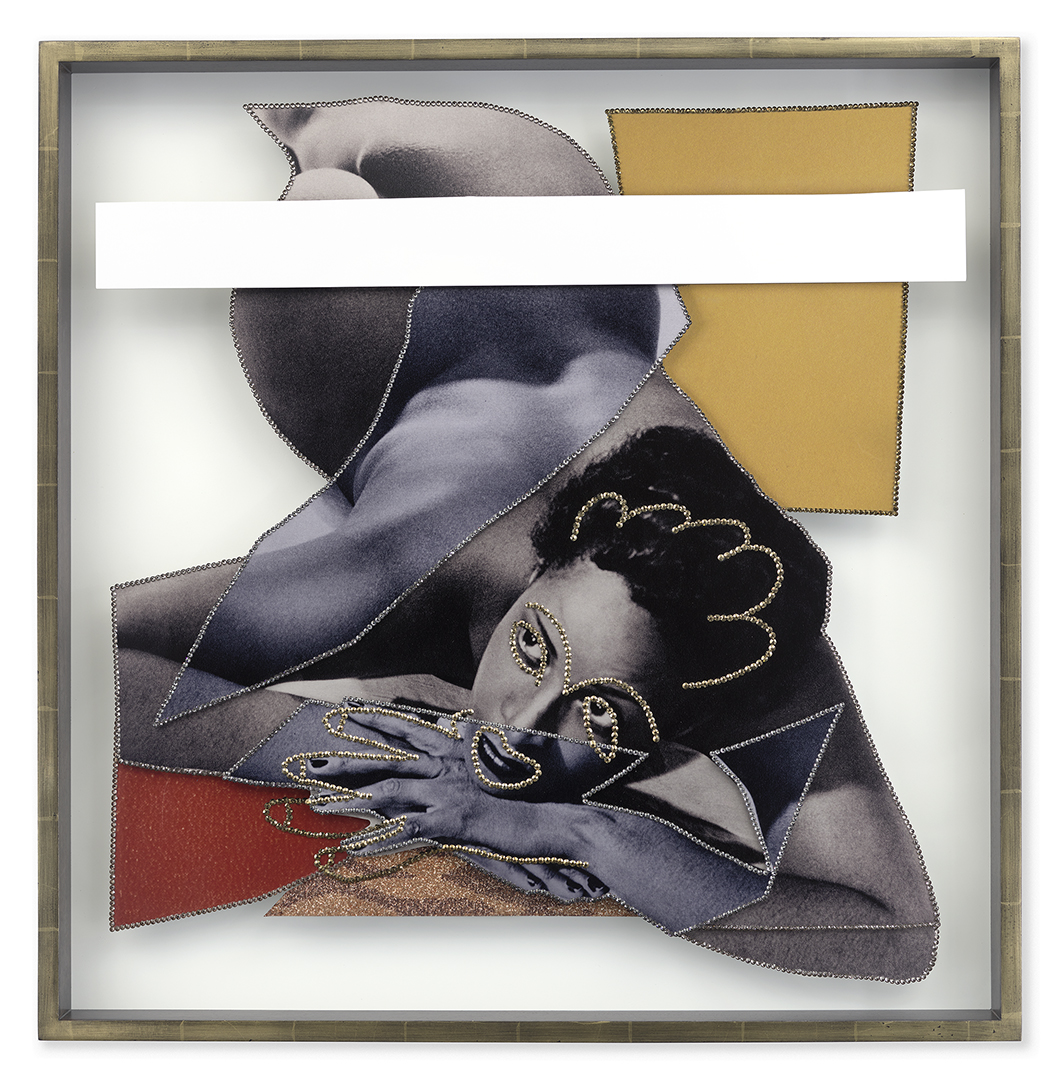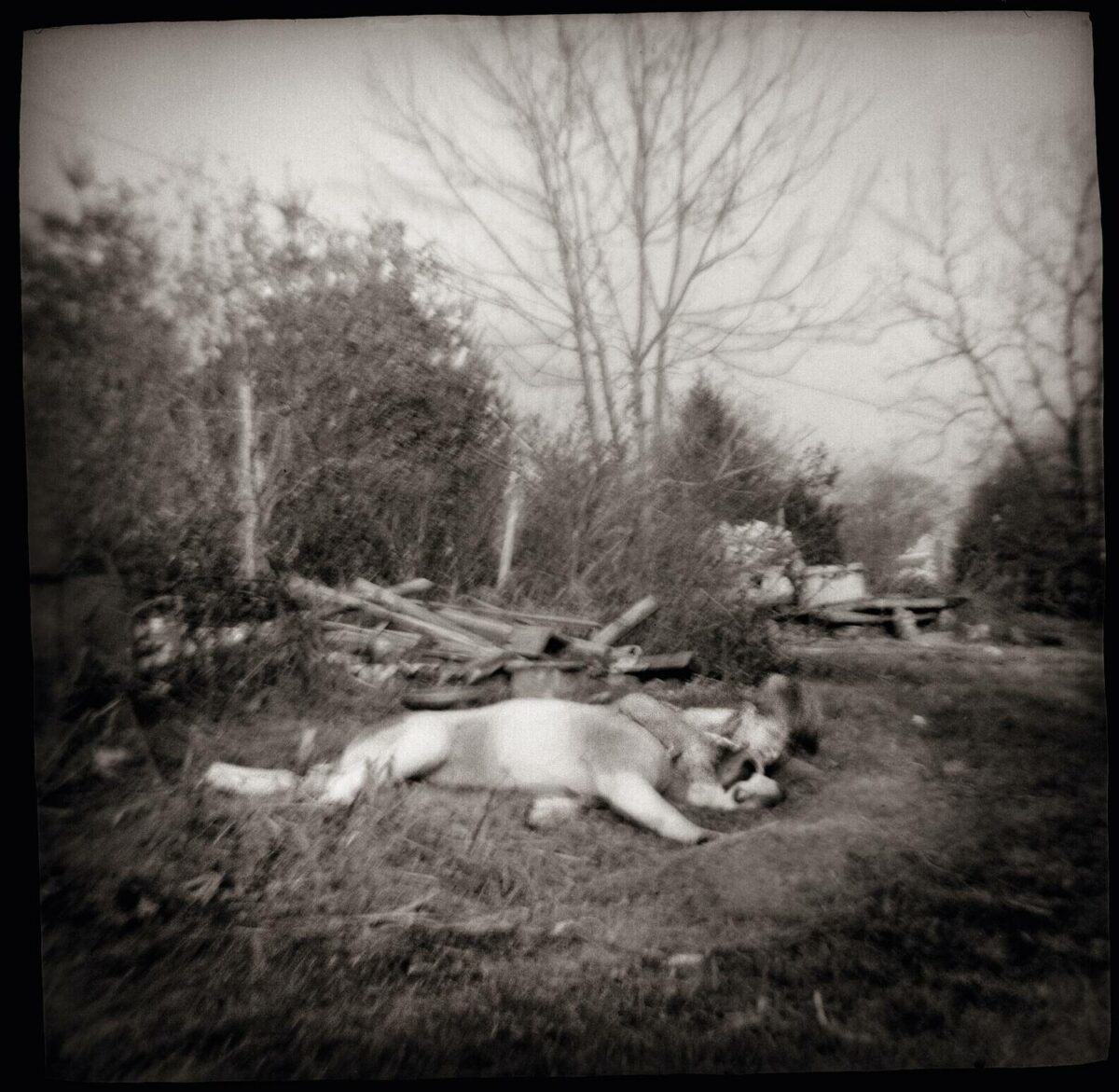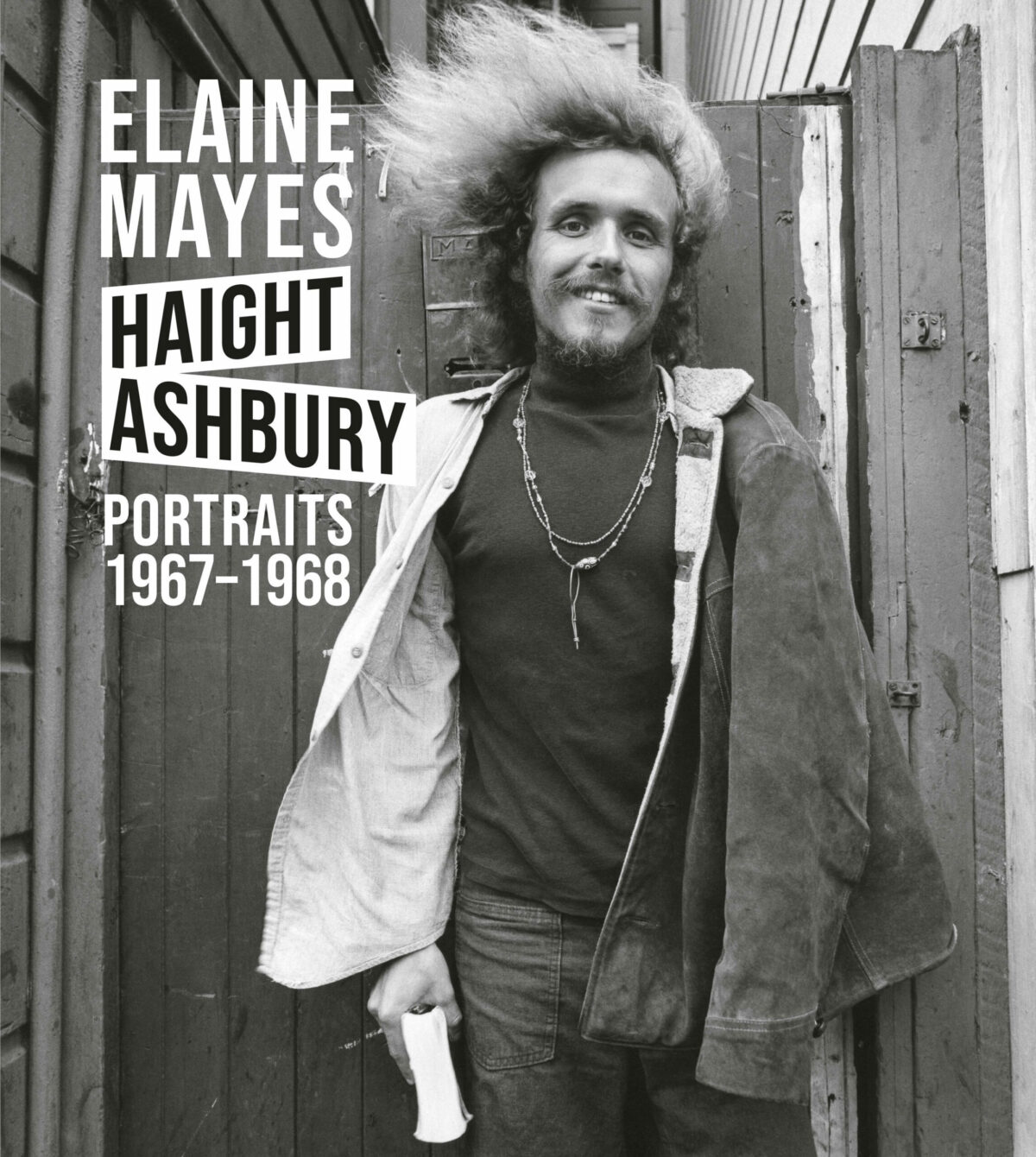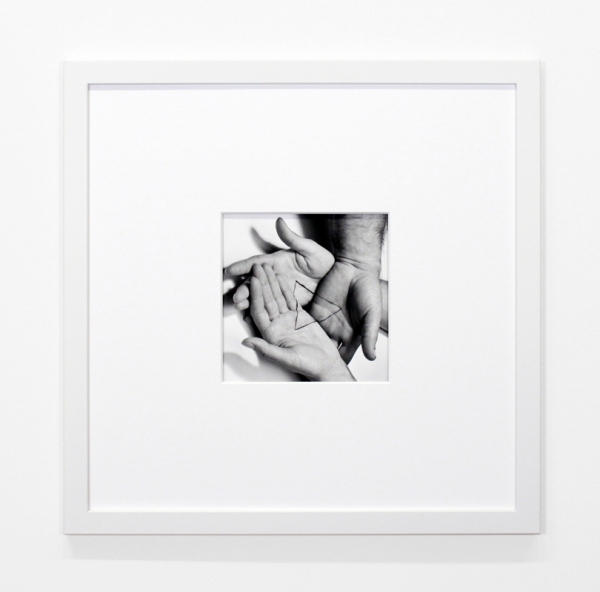Sarah Sense employed a muted color palette, repetitive patterning, and echoes of the grid in the photographic weavings and photo-based baskets on view in Power Lines. Rooted in the traditional basket-weaving techniques of Sense’s ancestral Chitimacha and Choctaw tribes, her works explore North American indigenous cultures, land seizure, displacement, and Hollywood mythmaking.
A variation on traditional methods, Sense’s work is created from woven archival inkjet prints made on Hahnemuhle bamboo paper, along with other materials including rice paper, beeswax, and artist tape. In the woven basket Plan of Attack, she bifurcates the basket with an off-white linear pattern on the left and an orange-tinged, diamond-shaped one on the right. Text from an archival colonial document woven into the left portion references a “plan of attack,” “rebels,” “South Carolina,” and “the King’s Land Force.” On the right side, a landscape photograph featuring a river, brush, trees, and sky is partially obfuscated.
Throughout Power Lines, landscape photographs, historical Native figures, 17th-century maps of North America, and self-portraits of two personas Sense explored in previous series – The Cowgirl and the Indian Princess – hint at narratives that reflect her own lived experience as well as critiques of cultural mythologies.
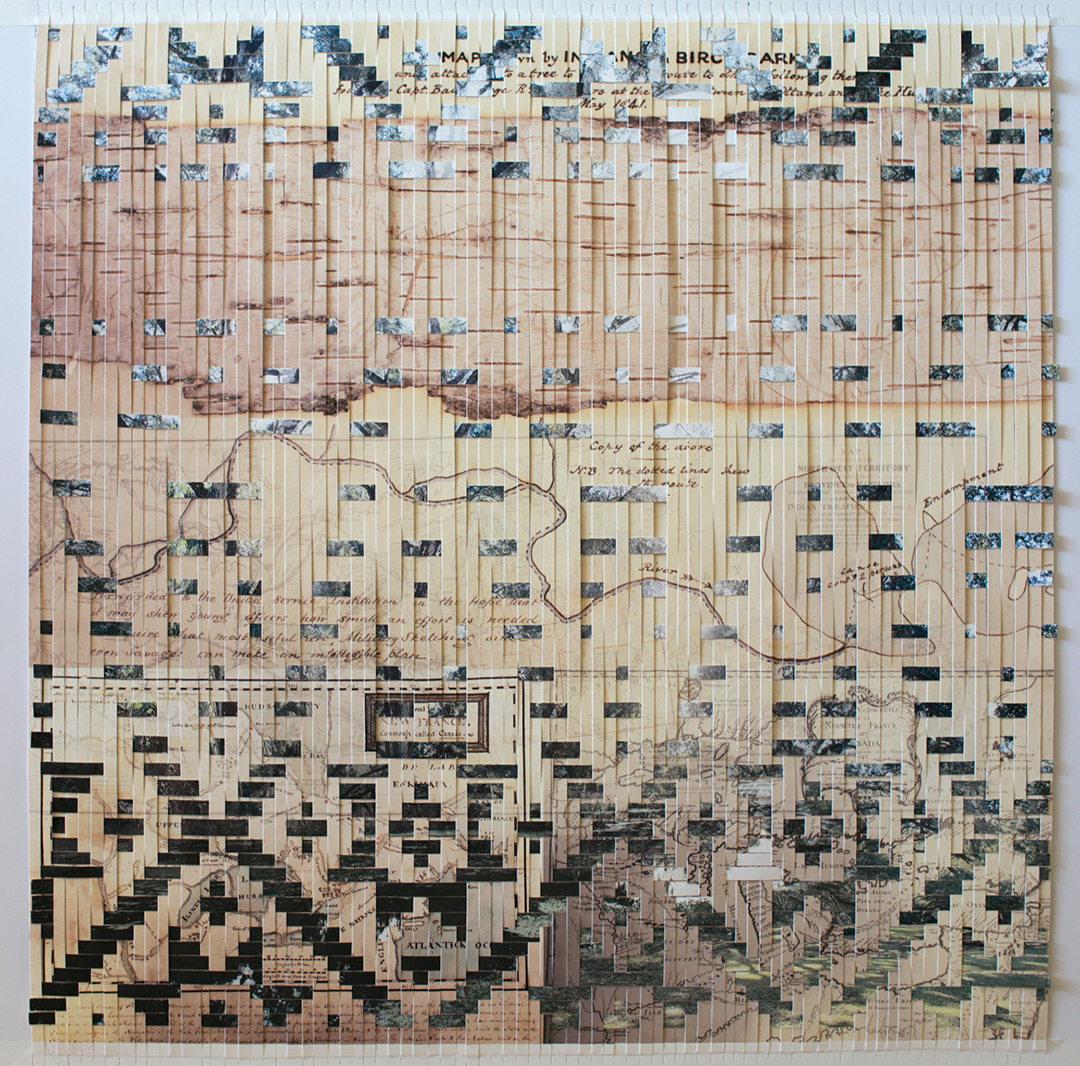

In the photo weaving Corps Engine, a diamond and oval pattern in warm white and black tones partially conceals images of a historical white settler and two self-portraits of Sense – one as an adult, and the other as a preteen girl with a lively, mischievous gaze. The relationship between the young girl and the grown woman, who also looks out at the viewer, creates a psychological tension, while the white male figure appears dated and out of place.
Power Lines engages with the forced physical assimilation of Native people and a process of psychological assimilation through the artifice of Hollywood and popular culture. With a nod to the growing field of Indigenous Futures, Sense’s works gesture in multiple directions, through the past and present, as well as toward a generative space of future preservation and possibility. She transforms source material, including colonial letters and maps from the archives of the British Library, into contemporary artifacts that allude to the retrieval of ancestral ways of being. The mathematics at play in the work, represented by the numbers inherent in weaving patterns, offer a further form of meaning in an increasingly uncertain world.

